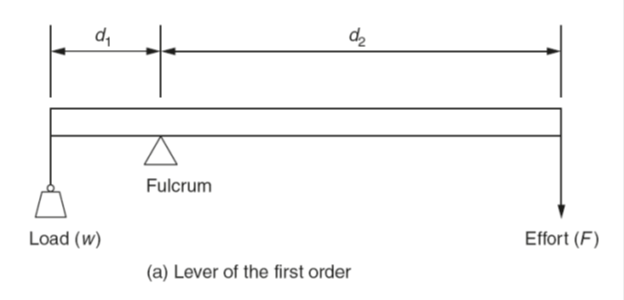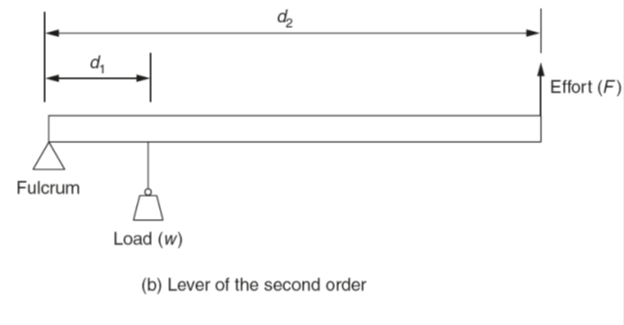Orders of levers
Figure a, b, & c shows the three orders of levers. Applying the principle of moments, the relationship between the load (W), the distance of the load from the fulcrum (d1) and effort (F), and the distance of the effort from the fulcrum (d2) is common to all the orders and can be expressed mathematically as:
W ×d1 =F ×d2
Therefore:
W = F × d2/d1
And:
F =W ×d1/d2



First-order levers
The fulcrum is positioned between the effort and the load.
- The effort force is smaller than the load.
- The effort moves further than the load.
- This order of levers can be considered as a force magnifier.
Second-order levers
- The effort and the load are positioned on the same side of the fulcrum but applied in opposite directions.
- The load lies between the effort and the fulcrum.
- The effort is smaller than the load.
- The effort moves further than the load.
- This order of levers can be considered as a force magnifier
Third-order levers
- The effort lies between the load, and the load and the fulcrum.
- The effort is greater than the load.
- The load moves further than the effort.
● This order of levers can be considered as a distance magnifier

